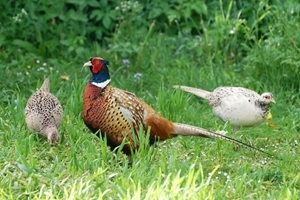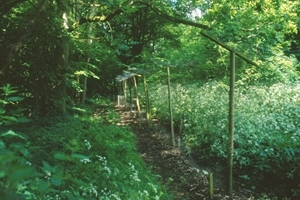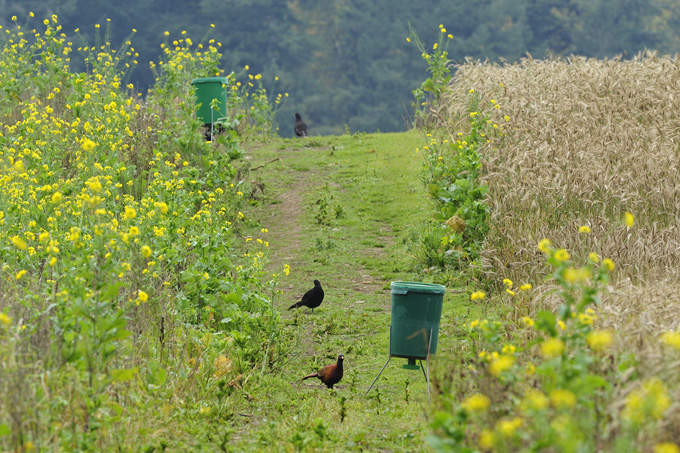 The issues surrounding the release of millions of reared gamebirds (mostly pheasants, but also red-legged partridges) have come to prominence recently, prompting some inaccurate debate regarding the impact they have on their environment and on the animals and plants that share those environments with them.
The issues surrounding the release of millions of reared gamebirds (mostly pheasants, but also red-legged partridges) have come to prominence recently, prompting some inaccurate debate regarding the impact they have on their environment and on the animals and plants that share those environments with them.
Much has been made of the damage done by released gamebirds. There can indeed be damage, especially where the densities of numbers released exceed 1,000 birds per hectare of release pen. However, many of the claims of damage are unresearched and speculative. That does not mean that there is or is not damage, just that not enough good-quality research on the impacts to distinguish truth from fiction has yet been conducted.
Much of the research to date on the impacts of released pheasants, both positive and negative, has been conducted, funded and written up for publication by the GWCT. For example, in the last ten years alone, GWCT scientists have authored or co-authored 14 papers on this subject in peer-reviewed journals. This means that our work – how it was conducted, analysed and interpreted – has been approved by our research peers. A list of these papers follows.
Download our essential FREE Guidelines for sustainable gamebird releasing, produced by GWCT Advisors.
Download FREE >
Most recently, the GWCT research department has pulled all these studies and others together in one review paper. This, too, has been submitted to a peer-reviewed journal. We are awaiting comments from the editor and anonymous referees, pending a decision on whether the review will be accepted for publication.
 In reviews of the evidence compiled by others, many of the papers written by GWCT authors have not been taken into consideration, even though they were peer-reviewed and readily available. It makes us wonder whether they were ignored because they did not comply with the anti-releasing agenda of some engaged in this debate.
In reviews of the evidence compiled by others, many of the papers written by GWCT authors have not been taken into consideration, even though they were peer-reviewed and readily available. It makes us wonder whether they were ignored because they did not comply with the anti-releasing agenda of some engaged in this debate.
We actively seek to conduct research that investigates potential negative impacts. We also make it clear to funders that, as a research charity working for the public good, if we find negative impacts, we will report on them in the scientific literature. Identifying such impacts is the first step towards putting them right, and one of our research fortes is finding solutions to problems. Equally, where our research reveals a positive contribution to conservation made by gamebird management, we shall report on that in the same way. Much of our research is conducted with partners, especially in the university sector. This, on top of peer review, adds a second layer of credibility to our scientific findings.
Many questions relating to the consequences of releasing gamebirds on the environment remain to be answered, and the future holds many challenges for researchers from the GWCT and elsewhere wishing to investigate the topic. Studies addressing those questions must be conducted rigorously because of the scrutiny that they will receive. They are often difficult to set up because they usually need to be long-term and conducted at a landscape scale, which makes them logistically difficult and costly to run.
List of relevant GWCT papers
- Sage et. al. (In Review) The ecological consequences of gamebird releasing.
- Aebischer N.J. (2019). Fifty-year trends in hunting bags of birds and mammals and calibrated estimation of national bag size using GWCT’s National Gamebag Census. European Journal of Wildlife Research, 65: 64-76.
- Capstick L.A., Draycott R.A.H., Wheelwright C.M., Ling D.E., Sage R.B. and Hoodless A.N. (2019). The effect of game management on the conservation value of woodland rides. Forest Ecology and Management.
- Capstick L.A., Sage R.B. and Hoodless A. (2019). Ground flora recovery in disused pheasant pens is limited and affected by pheasant release density. Biological Conservation, 231, 181-188.
- Sage R.B., Woodburn M.I.A., Hoodless A.N., Turner C.V., Draycott R.A.H., Sotherton N.W. (2018). Predation of released common pheasants Phasianus colchicus on UK lowland farmland and the effect of predator control. European Journal of Wildlife Research, 64: 14.
- Robertson P.A., Mill A.C., Rushton S.P., McKenzie A.J., Sage R.B., Aebischer N.J. (2017). Pheasant release in Great Britain: long-term and large-scale changes in the survival of a managed bird. European Journal of Wildlife Research.
- Gethings O.J., Sage R.B., Morgan E.R., Leather S.R. (2016). Body condition is negatively associated with infection with Syngamus trachea in the Ring-necked Pheasant Phasianus colchicus. Veterinary Parasitology.
- Sanchez-Garcia C., Buner, .D., Aebischer N.J. (2015). Supplementary Winter Food for Gamebirds Through Feeders: Which Species Actually Benefit? The Journal of Wildlife Management 79, 832–845.
- Neumann J.L., Holloway G.J., Sage R.B., Hoodless A.N. (2015). Releasing of pheasants for shooting in the UK alters woodland invertebrate communities. Biological Conservation (2015), pp. 50-59.
- Gethings O.J., Sage R.B. & Leather S.R. (2015). Spatial distribution of infectious stages of the nematode Syngamus trachea within pheasant (Phasianus colchicus) release pens on estates in the South West of England: potential density dependence? Veterinary Parasitology, 212: 267-274.
- Whiteside M.A., Sage R.B. & Madden J.R. (2015). Diet complexity in early life affects survival in released pheasants by altering foraging efficiency, food choice, handling skills and gut morphology. Journal of Animal Ecology, 84: 1480-1489.
- Callegari S.E., Bonham E., Hoodless A.N., Sage R.B. & Holloway G.J. (2014). Impact of game bird release on the Adonis blue butterfly Polyommatus bellargus (Lepidoptera Lycaenidae) on chalk grassland. European Journal of Wildlife Research 60:781–787.
- Draycott R.A.H., Hoodless A.N., Cooke M. & Sage, R.B. (2012). The influence of pheasant releasing and associated management on farmland hedgerows and birds in England. European Journal of Wildlife Research, 58: 227-234.
- Sage R.B., Woodburn M.I.A., Draycott R.A.H., Hoodless A.N. Clarke S. (2009). The flora and structure of farmland hedges and hedgebanks near to pheasant release pens compared with other hedges. Biological Conservation 142, 1362–1369.

Download our essential FREE Guidelines for sustainable gamebird releasing, produced by GWCT Advisors.
Download FREE >